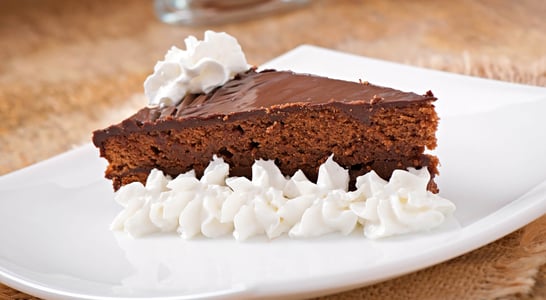
Walt Disney's birthday
Born in Chicago, Illinois, on December 5th, 1901, future illustrator and businessman Walter Elias Disney was interested in drawing early on, and he practiced and honed his skills by copying cartoons printed in the newspapers, and later took art and cartooning classes. By 1917, Disney was a cartoonist in his high school’s newspaper and attended the Chicago Academy of Fine Arts.
A year later, Disney lied about his age to enroll in the Army during World War I. He was an ambulance driver in France after the armistice and contributed some of his drawings to the Army’s newspaper, Stars and Stripes. When the war ended, Disney moved to Kansas City, where he got a job as a commercial illustrator for an art studio.
In 1920, Walt and a fellow coworker, Ub Iwerks, attempted to form their own commercial art company, but the business failed to take off. In order to earn money, Disney joined the Kansas City Film Ad Company, where he began to animate his first short cartoons, which were modernized fairy tales called “Laugh-O-Grams.”
When the studio fell into bankruptcy in 1923, Walt relocated to Hollywood, where his brother Roy was living, and found work as a producer for a live-action/animated series called Alice’s Wonderland. Walt and his brother then formed the Disney Brothers Studio, with Iwerks joining them too. In 1926, Disney and Iwerks also created Oswald the Lucky Rabbit, the precursor of the famous Mickey Mouse, as their distributor wanted new material but, following monetary issues, Disney ended the partnership and lost the rights to his cartoon.
To replace Oswald, Disney came up with Mickey Mouse (originally called Mortimer Mouse) with Iwerks as the animator and Disney as its voice. Mickey Mouse made its debut in 1928 with three shorts. For the third one, Steamboat Willie, Disney added synchronized sound. Finally securing a distributor for his videos, Disney formed his group of core animators (known as the Nine Old Men) and began to produce a series of musical shorts called Silly Symphonies, from 1929 to 1939, which turned out to be very successful.
However, problems with their distributor over the brothers’ share of the profits led them to sign with Columbia Pictures. By the mid-1930s, the company had introduced three of its iconic characters, Pluto, Goofy and Donald the Duck, as well as embraced the new Technicolor technology for its shorts, beginning with 1932’s Flowers and Trees. This short earned Disney his first Academy Award for Short Subject (Cartoon).
In 1937, Disney released his first animated feature, Snow White and the Seven Dwarfs, which became a critical and commercial hit. The film marked the beginning of the “Golden Age of Animation” for the Disney Brothers’ Studio, and Snow White was soon followed by Pinocchio and Fantasia in 1940, and Dumbo in 1941. As the U.S. entered World War II, Disney was hired to produce several Army and war animated propaganda for the government. Another animated feature, Bambi, premiered in 1942 but was a box office failure.
By then, the studio was greatly indebted and struggling to break even. Disney would only be able to replicate the success of his first animated film in 1950 with the debut of Cinderella. At this time, Walt had become less and less involved in the animation process and had started to focus on other projects, mainly the construction of a theme park.
While the studio released its first live-action feature, Treasure Island (1950), followed by The Story of Robin Hood and His Merrie Men (1952), and animated films Alice in Wonderland (1951) and Peter Pan (1953), Walt planned the construction of Disneyland, in California. Thanks to his own personal money and external funding, the theme park opened in July 1955 to great success, and has remained in operation ever since, retaining its original layout as envisioned by Disney.
Walt continued to be involved in TV and film projects, including the variety show The Mickey Mouse Club, and animated films Lady and the Tramp (1955), Sleeping Beauty (1959), One Hundred and One Dalmatians (1961), and The Sword in the Stone (1963). He produced the animated/live action movie Mary Poppins in 1964, which performed very well commercially and with the critics. By 1965, Disney planned to create a second theme park, this time in Florida, which would eventually become Walt Disney World, and also increased his participation in the studio’s films.
He had been involved in the development of The Jungle Book (1967), The Happiest Millionaire (1967) and the animated short Winnie the Pooh and the Blustery Day (1968) at the time of his death, on December 15th, 1966, in Burbank, California, due to complications from lung cancer. After his death, his brother Roy stepped in to lead the company and complete Walt Disney World, which was dedicated to Walt’s memory. To this day, Disney remains an important figure in the history of animation and in popular culture.
Also on this date...
National Bartender Day
These cocktail conjurers craft liquid symphonies, turning a simple drink into a flavorful, memorable experience with a flick of the wrist.
Sacher-Torte Day
Indulging in a decadent dessert that harmoniously blends rich chocolate and a hint of fruity sweetness, creating a symphony of flavors.
International Ninja Day
Stealthily slip into black attire to channel your inner ancient warrior, gather your gang of like-minded spies and binge some classic ninja movies.




